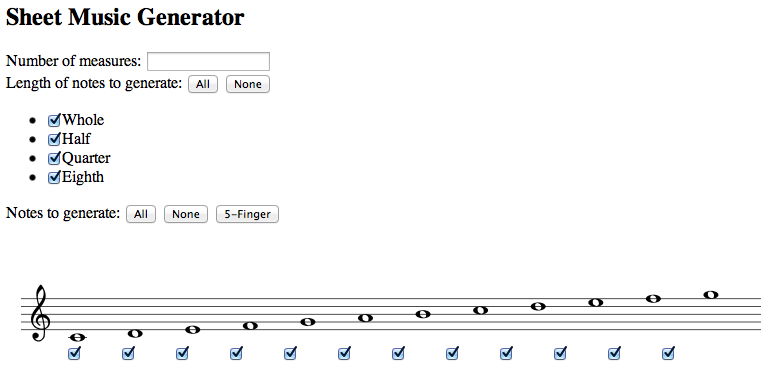I’ve been listening to a lot of Irish Traditional music recently, and a lot of Irish traditional songs are played on the penny whistle, also known as the tin whistle. (That wind instrument you hear on records by the Chieftains or the Dubliners? Probably a penny whistle.) The penny whistle, a cousin of the recorder and the flageolet, is one of the simplest wind instruments: a whistle, or fipple flute, with six finger holes, capable of playing two full octaves on a diatonic scale (i.e., without any accidental sharps and flats). Every penny whistle is tuned to a particular key (usually D major, but many keys are available); and to play a tune in a particular key you just pick up a whistle for that key and play the notes as written.
It’s actually possible to coax most of the accidentals out of your typical penny whistle, but it can be tricky, and the best fingering can vary from whistle to whistle. It’s a useful skill for experienced players.
Recently a friend mentioned that he wanted a new penny whistle, and that got me intrigued. I used to play the recorder a fair bit (I was an intermediate player at best) and I figured I could manage to play a penny whistle. And penny whistles have a couple of neat features for the casual player: first, they are easy to play, because the fingering couldn’t be simpler; and second, they are remarkably inexpensive. Many a well-known recording features a Clarke penny whistle that will set you back less than $15.
There are many makers these days, but the classic manufacturer is Clarke; they have been making penny whistles since 1843. They still sell the same whistle they made then, hand-rolled out of tinplate with a tin head and wooden block; and they also make a number of whistles with a plastic head, including the Clarke Sweetone, which is what I bought. With a plastic head, it’s a little more forgiving; and as I say, it’s a perfectly good, highly regarded whistle.
I know this because I went to Chiff and Fipple, the main web page for penny whistle enthusiasts, and read their FAQs on choosing a whistle. There are many that are more expensive, going for the lordly sum of $60, but I thought, well, why not start out small.
Amazon likes to suggest other things you can add to a purchase, and one of them was an instruction book called The Clarke Tin Whistle, by Bill Ochs. I went ahead and grabbed a copy, and so far I’m pleased with it. It covers basic music theory (all of which I already knew), and teaches the fingering; but it also teaches useful skills for the kind of traditional music you usually play on a whistle. For example, it shows you how to work out the rhythmic pattern of the piece before you ever worry about the melody—a simple thing, but one that I’d never learned to do (or at least it had never sunk in), with the result that fast, complicated rhythms always threw me. But that’s what you’re signing up for in traditional music; it’s diatonic, and so the interest comes in by doing neat things with the rhythms.
Also, the book looks like it will keep me busy for a good long time; it starts at the absolute beginner level and continues on to cover quite expert techniques, and it includes a CD so that you know what they are supposed to sound like. It’s certainly enough to get me well started.
So I’m embarking on a bit of an adventure. Y’all can come along if you like; the price is right.
UPDATE: Joseph Susanka objected because there wasn’t any penny whistle to be heard in this post. So here’s James Galway showing what you can do if you know what you’re doing, have practiced for thousands of hours, and are really, really talented:











